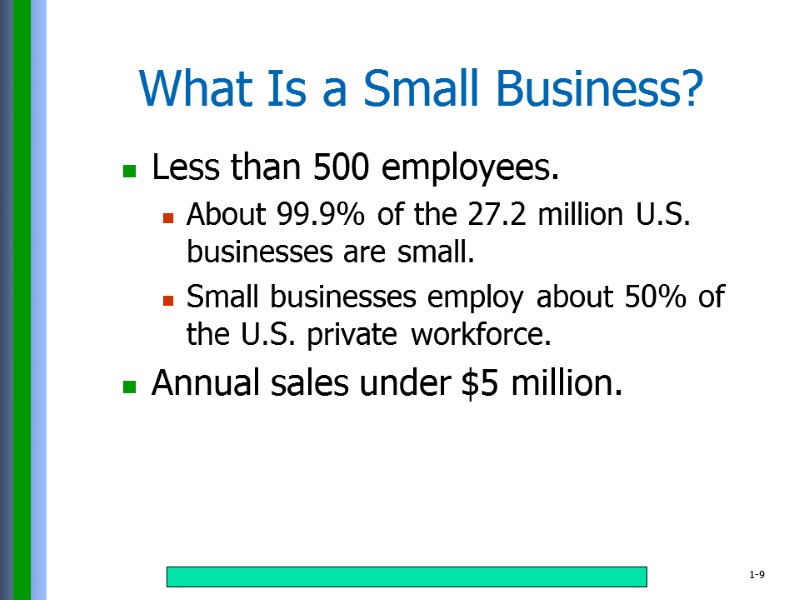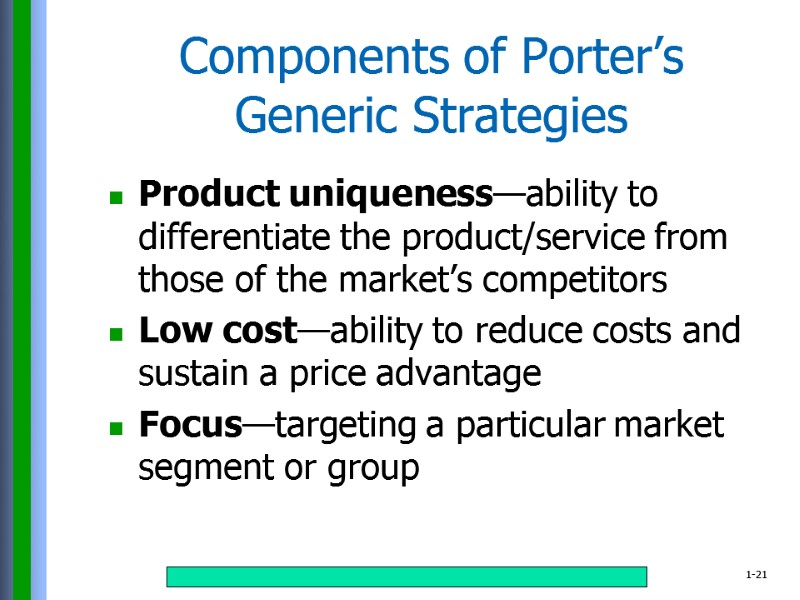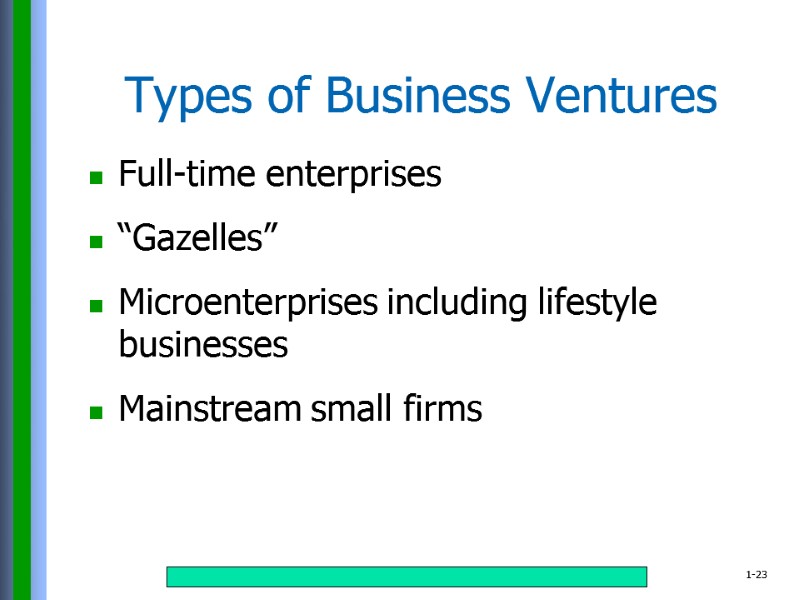Small Business Management Professor Cameron A. Batmanghlich (PhD)


Small Business Management Professor Cameron A. Batmanghlich (PhD)

Chapter 1: ENTREPRENEURS RECOGNIZE OPPORTUNITIES

Learning Objectives Explain what entrepreneurs do. Describe how free-enterprise economies work and how entrepreneurs fit into them. Find and evaluate opportunities to start your own business. Explain how profit works as a signal to the entrepreneur.

Business—buying and selling products and services. Product—something tangible that exists in nature or is made by people. Service—intangible work that provides time, skills, or expertise. What Is Business?

Employees work for someone else’s business. Entrepreneurs start their own businesses and work for themselves. What Is an Entrepreneur?

A scarce (limited) resource is something of value that can be used to make something else or fill a need. Entrepreneurs add value to scarce resources by what they do with those resources. Entrepreneurs Add Value to Scarce Resources

What should be produced? When will it be produced? How will it be produced? Who will produce it? Who gets to have what is produced? An economy is a country’s financial structure. It is the system that produces and distributes wealth. The Economic Questions

Free-Enterprise System Economic system in which businesses can be privately owned and operated. Also called capitalism. Based on voluntary exchange. Encourages competition between entrepreneurs. Free market forces determine prices. Private wealth and property ownership. Involves capital investment.

What Is a Small Business? Less than 500 employees. About 99.9% of the 27.2 million U.S. businesses are small. Small businesses employ about 50% of the U.S. private workforce. Annual sales under $5 million.

Control over time Fulfillment Creation/ownership Control over compensation Control over working conditions The desire to make money, alone, is not a good enough reason to start one’s own business. Why Be an Entrepreneur?

Benefits and Costs of Becoming an Entrepreneur Benefits Independence Satisfaction Financial reward Self-esteem Contribution to society Costs Business failure Obstacles Loneliness Financial insecurity Long hours/hard work Strain on personal relationships

Benefit/Cost Analysis—a decision-making process in which the costs of taking an action are compared to the benefits. Benefits—money, knowledge, and experience you will gain. Costs—money and time you must invest. Opportunity Cost—the value of what must be given up in order to obtain something else. For a benefit/cost analysis to be accurate, opportunity cost must be included. Benefit/Cost Analysis

Keys to Avoiding Missteps Explore options thoughtfully and systematically Research Educational courses and workshops Learn from the experience of others Formal mentors Informal advisors

Entrepreneurial Options Traditional for-profit enterprise Social entrepreneurship—for-profit with dual goals of profitability and social returns. Social business Venture philanthropy Green entrepreneurship Not-for-profit organization

Shumpeter’s Sources of Opportunity Use a new technology to produce a new product. Use an existing technology to produce a new product. Use an existing technology to produce an old product in a new way. Find a new source of resources to produce more efficiently. Develop a new market for an existing product.

Creating Business Ideas Listen Observe Analyze Drucker: exploit changes in the world.

Not All Ideas Are Opportunities An opportunity is an idea that is based on what consumers need or want and are willing to buy sufficiently often at a high enough price to sustain a business. Opportunity is situational: dependent on variable circumstances.

Timmons’ Business Opportunity = Idea + Four Characteristics Attractive to customers. Will work in the business environment. Can be executed in an existing window of opportunity. Can be implemented with the right team to make it durable.

Use SWOT Analysis to Evaluate Business Ideas Strengths Weaknesses Opportunities Threats

Five Roots of Opportunity Problems Changes Inventions Competitive advantage Technological advances The best business opportunities often combine both internal and external factors.

Components of Porter’s Generic Strategies Product uniqueness—ability to differentiate the product/service from those of the market’s competitors Low cost—ability to reduce costs and sustain a price advantage Focus—targeting a particular market segment or group

Pathways to Entrepreneurship Start and build a new business. Inherit a business. Secure franchise rights. Buy an existing business. License or purchase technology. Respect the intellectual property of others.

Types of Business Ventures Full-time enterprises “Gazelles” Microenterprises including lifestyle businesses Mainstream small firms

Profit—amount remaining after costs are deducted from the firm’s income. Profit signals that an entrepreneur is adding value to scarce resources. Entrepreneurs try to make choices (trade-offs) that will increase profit. Profit Is a Sign of Success

Seven Rules for Building a Successful Business Recognize an opportunity Evaluate it with critical thinking (SWOT) Build a team Write a realistic business plan Gather resources Decide ownership Create wealth

THANK YOU!
5518-sme_management_-_lec._1.ppt
- Количество слайдов: 26

